Gorst Creek Restoration
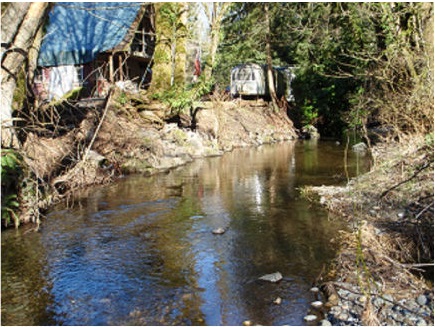
Above shows the steeply eroded banks before the project.
Gorst Creek is a salmon-bearing stream in the city of Bremerton in Kitsap County. The creek has lost a lot of its quality spawning habitat, and is listed on the state’s list of streams with impaired water quality.
The project’s goals were to:
- create habitat
- cool the water by creating deeper pools, and planting trees to create shade
- clean the water by reducing erosion and adding vegetation to better rainwater before entering the stream.
To address this, Mid Sound worked with a private property owner to restore a more natural habitat along a 1200 foot length of the creek.
Restoration included:
- 35 pieces of large wood (trees with root wads attached) were installed on both sides of the bank and in-stream throughout the project reach. The root wads will help slow down high energy water and both provide bank stabilization and habitat for aquatic species.
- Connecting the creek to an old side channel to increase stream length and amount of habitat.
- A total of 481 native plants were installed along the riparian zone to help with water quality and bank stabilization as well. The native plants will help filter and slow down storm water run-off from the adjacent private properties.
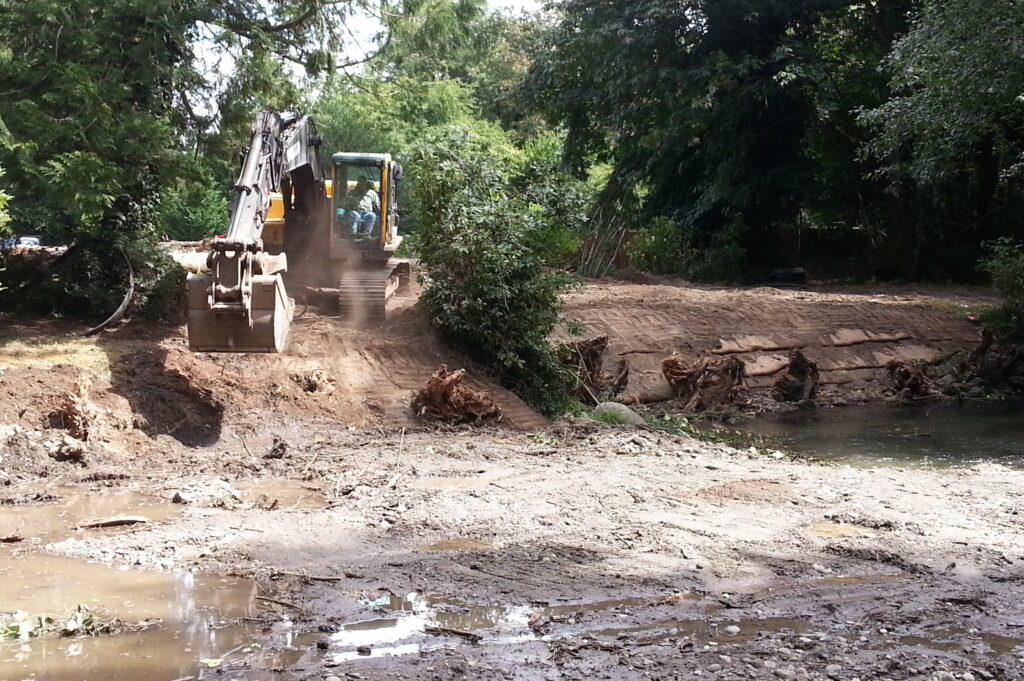
This photo shows the root wads sticking out of the banks – which will provide shelter for fish when the water is returned to the stream.
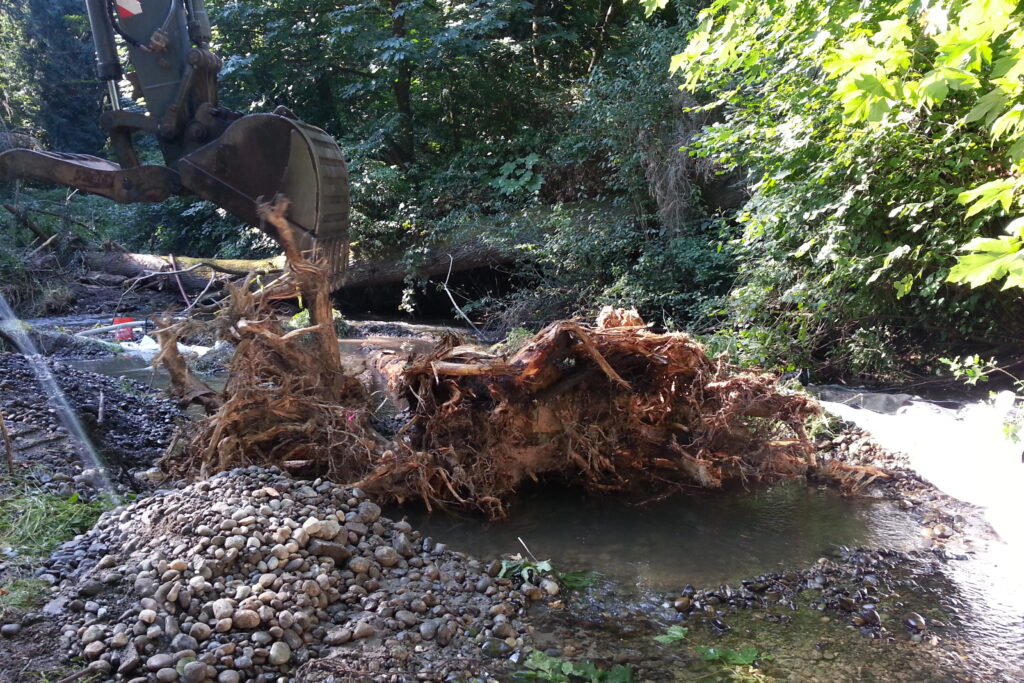
This is called an Apex Jam. An Apex Jam is wood placed where a stream splits off. It provides flow control during high flows, as well as in habitat.
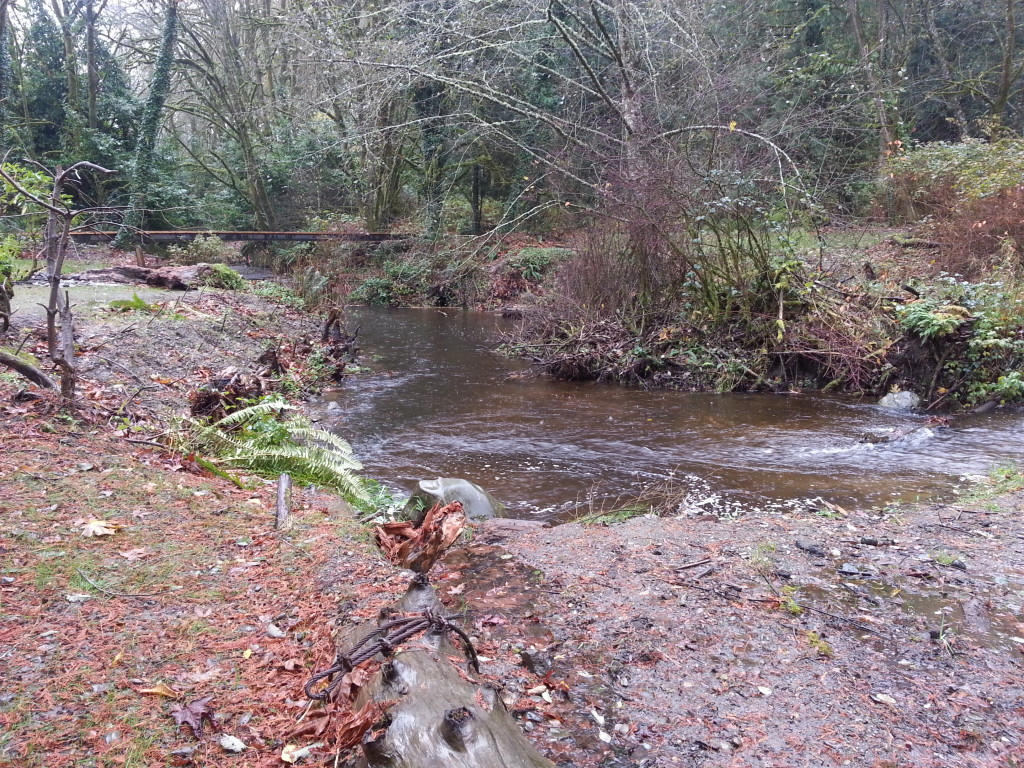
After restoration on Gorst Creek
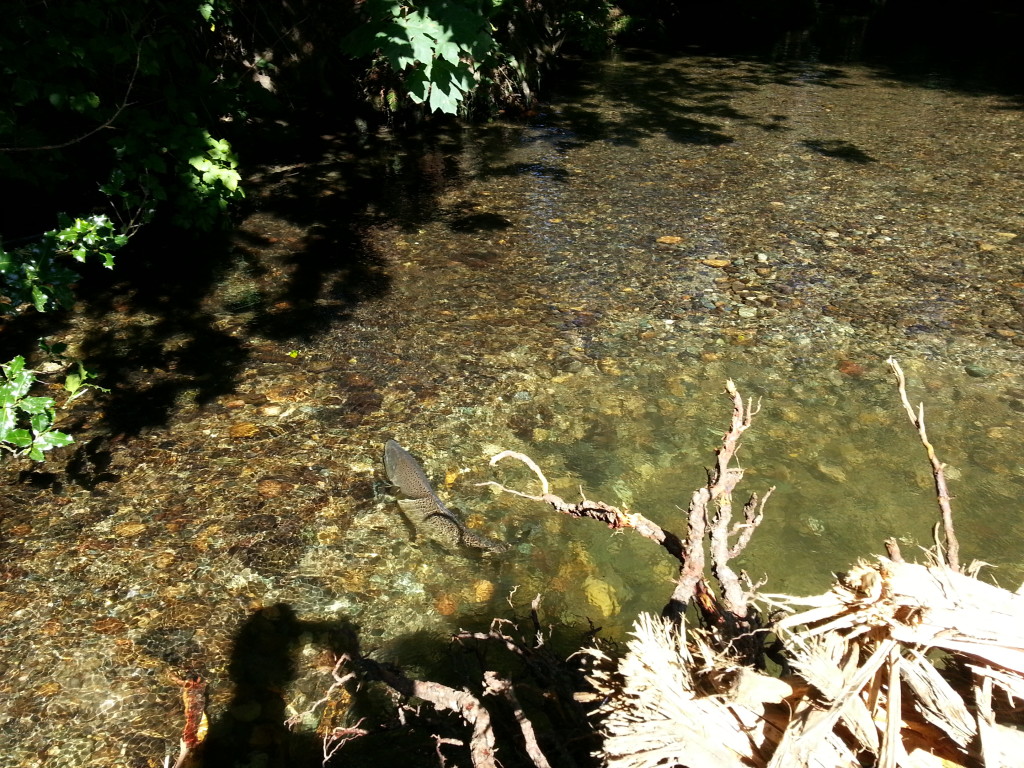
Adult Chinook salmon (from the nearby hatchery) enjoying this newly created resting pool at the upstream end of the Apex Jam.
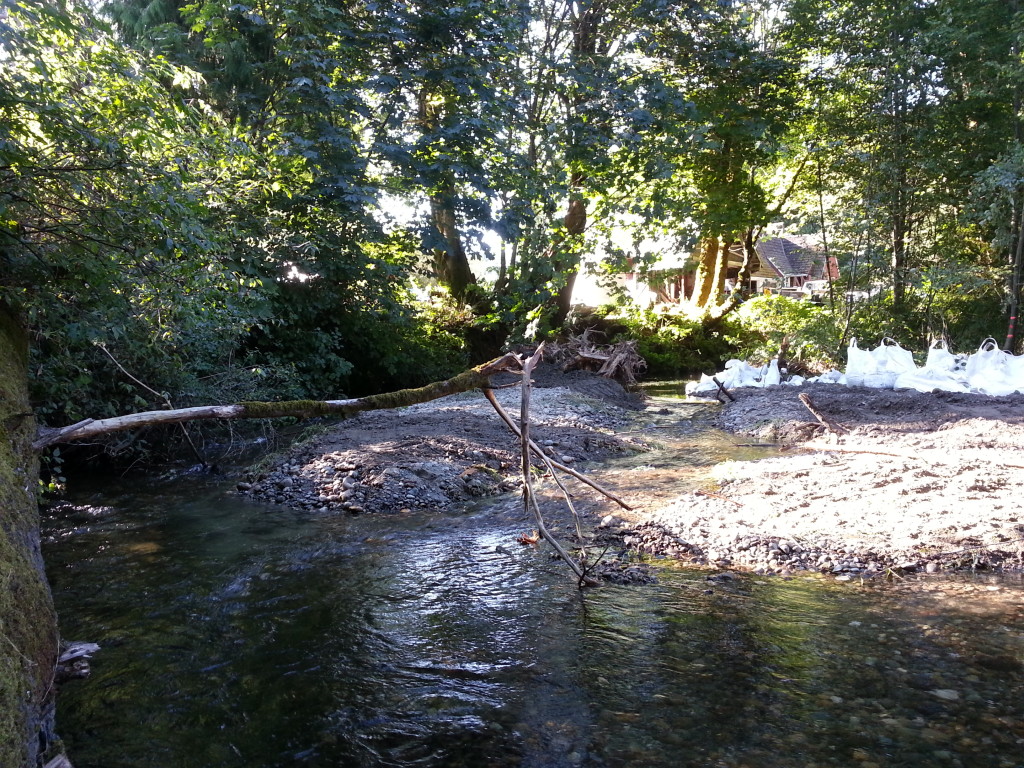
View from downstream, after the project is complete. You can see that the banks are more rounded, and that there are several channels, instead of one straight stream. This provides more habitat for fish.
Partnerships
Designs were funded by the National Fish & Wildlife Foundation and Trout Unlimited. Construction was funded by Salmon Recovery Funding Board and Department of Ecology. Special thanks goes to the landowner and the Suquamish Tribe for their patience and technical assistance. This project was designed by GeoEngineers and constructed by Sealevel Bulkhead Builders.